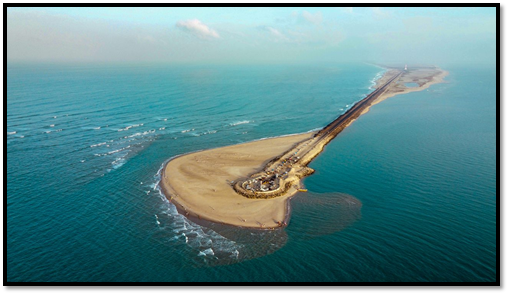India has achieved another milestone in engineering with the completion of the new Pamban Bridge, the country’s first vertical-lift railway sea bridge. This groundbreaking structure, spanning the Pamban Strait and connecting the Indian mainland with Rameswaram Island in Tamil Nadu, stands as a testament to the nation’s ability to blend historical significance with modern innovation.
Replacing the historic 110-year-old Pamban Bridge, the new structure has been designed to accommodate both the needs of maritime navigation and railway transportation. The original bridge, a marvel of its time when inaugurated in 1914, played a crucial role in connecting pilgrims and traders to the sacred island of Rameswaram. However, decades of exposure to harsh marine conditions and heavy winds took their toll, necessitating a stronger and more advanced replacement.
Built approximately 27 meters north of the old bridge, the new Pamban Bridge stretches 2.07 kilometers across the sea. Its defining feature is the central 72.5-meter-long vertical lift span, a first for Indian Railways. This mechanism allows the middle section of the bridge to rise 17 meters, enabling large vessels to pass beneath it. Engineers overcame significant challenges, including unpredictable tides, strong winds, and a seabed that required precise calculations and immense care during construction. The bridge’s foundation includes over 330 reinforced piles, and its structure incorporates marine-resistant materials to withstand the corrosive coastal environment. It is also future-ready, with a foundation capable of supporting a second railway track.
Beyond its impressive engineering, the new bridge is steeped in cultural and religious significance. Rameswaram, a site deeply rooted in Indian spirituality, is mentioned in the Ramayana as the starting point of the legendary Ram Setu. For pilgrims and travelers, the bridge provides faster and safer connectivity to the island, while also opening up new economic opportunities for local communities.
Equipped with cutting-edge technology, the bridge ensures both operational efficiency and safety. A three-cup anemometer continuously monitors wind speeds, automatically triggering red signals to halt train operations if speeds exceed 58 kmph. Additionally, an Atmospheric Water Generator at the control room provides clean drinking water by converting air humidity, ensuring the well-being of on-site personnel.
The new Pamban Bridge is more than just an infrastructure project; it is a symbol of progress that respects the past while paving the way for the future. As travelers cross the bridge, they traverse not only the waters of the Pamban Strait but also the rich tapestry of India’s legacy and its aspirations for innovation. With this project, India has once again demonstrated its ability to undertake and complete projects that balance cultural heritage with technological advancement.





